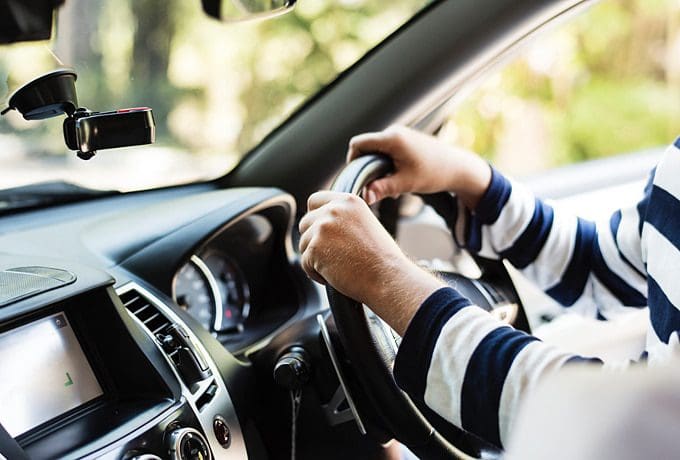words Al Woods
Living in an age where technology is constantly improving, there’s no disputing the fact that the changing face of in-car technology is having a huge impact on the way we learn to drive.
For example, around the same time as the introduction of sat navs in the driving test, the DVSA approved the use of parking sensors. That said, only parking sensors which emit a beeping noise are approved for use on driving tests – if the car is fitted with parking cameras, you won’t be allowed to use them.
Even so, the use of autonomous technology such as parking sensors begs some questions. How effective is the use of technology during driving lessons/tests? Do they make learner drivers safer, or unprepared and reliant?
To help us find the answer, we asked Matt Press, owner of The Drive Hive, a driving school based in the UK, about the use of technology within driving lessons and to what extent tech helps learner drivers improve.

Q: What are your thoughts on the different kinds of technology being introduced to young/new drivers?
“At Learn, Think, Drive, we’re quite old school. Of course, modern cars and things like parking sensors, sat navs and suchlike are really useful. However, we think that anything that is intended to make life easier must be treated with caution.
“For instance, nothing beats learning how to parallel park like doing it by yourself without help. And how will you realise what it’s like to pay attention to signage if you’re always relying on a sat nav? So, whilst tech always carries good intentions, it mustn’t be used to bypass self-discovery.”
Q: Do you use tech during your own driving lessons? If so, what kind of tech do you use and for what purpose?
“One thing that we do recommend to our students is the use of Theory Test Pro. Now, this is an example of ‘good tech’, since it fundamentally exists to improve driving standards. That’s the key difference when compared to in-car stuff. And it works, too.
“These days, thanks to things like this, students are able to fully prepare for driving before they’ve even sat behind the wheel – that’s where technology is worth its weight in gold.”

Q: What are your thoughts on using virtual reality (VR) technology to help teens learn to drive?
“I think virtual reality could be an amazing tool that could potentially save a lot of lives, but ultimately nothing beats real-life experiences and advancement through making mistakes. You tend to see something new every time you head out on the road, so the more experience a learner can build up, the better a driver they’ll be.
“The issue is that there are only so many hours in a day! And furthermore, you don’t want a learner to make a dangerous mistake so they can learn from it necessarily – that would be reckless and it lands us in a catch-22 situation where we need a pupil to make a mistake so that they can learn and adjust their technique and mentality. That said, we clearly don’t want anyone to get hurt – and it’s here where VR could come into its own.
“You could compare it to being a pilot. As someone who is learning to fly a plane, there will come a point where they will have to fly a plane with passengers for the first time. They absolutely can’t make a mistake, yet it’s a difficult situation to prepare for. And my understanding is that pilots embrace VR because it offers a compromise – it’s realistic enough to improve their skills without putting safety on the line.
“My advice to anyone using VR would be to simply take it seriously. It would be easy to make reckless decisions because ‘it’s not real’. Like footballers taking a penalty in training. It’s not possible to entirely recreate the exact conditions of driving, but we must make it as realistic as possible. The technology can only do so much – the rest lies with the learner’s attitude.”
Q: What are your thoughts on driverless technology?
“We’ve looked a lot at driverless technology and we still think it’s a long way off. Whether it’s the technology, legislation or consumer adoption, I don’t think self-driving cars are a threat. For one, people still like driving. It’s fun! Sitting around being driven by someone you can’t see feels pretty bland. And that’s only if the experience works. As a concept, I don’t see it catching on (nor affecting learning to drive). It’s a bit like watching 3D TV. It seems like a nice idea, but in reality, you get fed up after 10 minutes.”
So, while autonomous technology can make learning to drive easier and safer in some respects, students should not rely on technology completely – otherwise it could simply serve to create a generation of drivers unprepared for the road. To reiterate Matt, “whilst tech always carries good intentions, it mustn’t be used to bypass self-discovery.”









